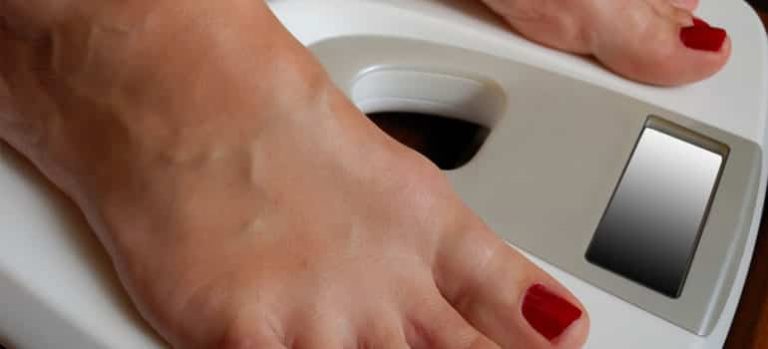How to Decrease Body Fat Percentage
It’s simple: weight loss is about losing weight… right? Well, not always. Some argue that it’s critically important to focus on decreasing body fat percentage alongside BMI and pounds to avoid becoming “skinny fat.”
Plus, recent research indicates that excess adiposity (body fat) is associated with an increased risk of chronic disease. Nonetheless, I’d bargain if your doctor still uses pounds and related changes in BMI to assess your weight loss progress with phentermine.
Here, we’ll talk about using BMI vs. body fat as a measure of health, plus give you a few strategies to decrease body fat percentage!
BMI vs. Body Fat: What Matters Most?
Many fitness experts will tell you that body fat percentage is the most important measure of overall fitness and health, while BMI (body mass index) remains the gold standard in medical practice.
Still, most fitness and health trackers only come with weight tracking, which could make you think that shedding pounds is the most important measure. So, what’s the verdict?
Why Body Mass Index Matters
BMI, or Body Mass Index, relates body weight to height. This value is used by medical professionals to estimate overall body fatness and has been widely touted as a reliable predictor of chronic disease risk.
BMI is a great, universal tool to assess the appropriateness of your weight in relation to your height.
It’s more useful than weight/mass alone because a healthy weight for a person who’s 5’2” tall isn’t the same as that of a person who is 6’2”.
For this reason, and the fact that it’s easy to measure & calculate, the medical community utilizes BMI to evaluate patients’ weight status. BMI classification helps them predict a patient’s risk of developing chronic diseases like high blood pressure, type 2 diabetes, and cardiovascular disease.
Still, BMI is far from perfect. While the calculation provides a general estimate of body fatness in the average person, it can be woefully inaccurate if the patient has unusually low or high muscle mass.
Older people tend to have low muscle mass, while athletes often sustain a higher-than-average lean muscle mass. In these cases, further measurements – like body fat percentage – can help practitioners get a more accurate picture of the patient’s weight status.
How to Calculate BMI
Curious about your current BMI? You can calculate it right now using this simple formula:
BMI = (weight in pounds * 703) / (height in inches)2
Why Body Fat Percentage Matters
Body fat percentage is not as well-researched as BMI for its use as a predictor of health outcomes, but many experts still see the benefit of this measurement.
For one, people with lower body fat percentages typically carry less fat around their bellies. Studies show that participants with a lower waist-hip ratio experience a decreased risk of cardiovascular disease. This makes sense since carrying less fat around your waist means that there’s less harmful fat pressing on your vital organs.
Decreasing body fat percentage also produces a visible, physical transformation. If you’ve ever gone through a phase where you were going down in inches or pants sizes but not in weight, you were probably losing body fat.
Still, body fat percentage is not widely used because it is harder to calculate (you either need a specialized machine or a set of anthropometric measurements) and prone to inaccuracy. For example, results from standard methods like calipers often vary several percentage points depending on the technique used.
You can estimate your body fat percentage at home, but if you’re curious about a more exact measure, head to your doctor, dietitian, or gym for a professional body composition assessment!
Ideal Body Fat Percentage
The ideal body fat percentage for you differs based on your lifestyle, gender, age, and even genetics.
For most people, an “average” body fat percentage (see below) is the goal. Women need to maintain a higher percentage of body fat to support menstruation and potential child-bearing activities.
The table below shows the American Council on Exercise’s body fat percentage classifications.
| Classification of % Body Fat | Women | Men |
| Essential Fat | 10 – 13% | 2 – 5% |
| Athletes | 14 – 20% | 6 – 13% |
| Fitness | 21 – 24% | 14 – 17% |
| Average | 25 – 31 % | 18 – 24% |
| Obese | 32% + | 25% + |
BMI vs. Body Fat Percentage
So, which matters more: BMI or body fat? If you skimmed all of that, here’s the summary!
The medical community still values BMI over body fat percentage as a measure of overall health status and disease risk because:
- BMI is seen as a general estimate of body fatness
- Body fat percentage measurements are harder to obtain & prone to error
- There is more research linking BMI and health status
Still, emerging evidence indicates that body fat percentage is also an important indicator of health.
Carrying extra fat, especially around the midsection, increases the risk of chronic disease and other negative health outcomes – even with a normal BMI. If you’re carrying extra fat, that means that figuring out how to reduce body fat percentage is still a very worthwhile activity.
Plus, muscle is more metabolically active and less voluminous than fat. This means that working to build lean muscle and reduce body fat will both increase your resting metabolic rate and decrease your pant size. In my mind, that makes both body fat reduction a valiant goal, even if medical progress is still measured with a change in BMI!
How to Decrease Body Fat Percentage
Whether your primary goal is weight loss or fat loss, the lifestyle changes are similar. You’ll achieve the most success if you eat well, exercise, and take time to rest.
Curious about a realistic goal for decreasing body fat percentage? Most experts agree that a reduction of about 1% body fat per month is both safe and doable. Still, just like with weight loss, individual differences dictate the viability of this goal in your particular case.
(1) Start with a Diet
The way to decrease body fat percentage is by cleaning up your diet. It’s undeniable that overall weight loss leads to fat loss, so eating right is critical to reducing body fat.
Similar to general weight loss, if you’re eating to decrease body fat percentage, you’ll want to:
- Track intake
- Minimize refined carbs & bad fats
- Focus on lean protein, complex carbs, and healthy fats
Track Intake
There are a lot of factors that affect weight loss, but one thing is clear: if you consistently eat less than you burn, you’ll lose weight. The problem is that knowing how much to eat is hard, and knowing how much you’re actually eating is even harder. That’s where weight loss apps like MyFitnessPal and LoseIt come in! These free apps are great for quickly and easily tracking your intake so that you can achieve your weight loss goals faster.
Struggling with estimating the amounts of food to enter into your app? Check out this infographic about how to estimate healthy portions using your hands!
Minimize Refined Carbs and Bad Fats
Both carbs and fats are healthy in moderation: the trick is to focus on the right types of carbs and the right types of fats. During your weight loss journey (and beyond!), focus on getting your carbs from complex, nutrient-rich starches and your dietary fat from healthy fats.
Refined carbs include foods like white bread, white pasta, white rice, cookies, cake, and pastries. These items spike your blood sugar and provide little fiber or other nutritional value alongside the calories. As a result, you get hungry more often when consuming a diet high in refined carbohydrates. Plus, post-spike crashes in blood sugar make you prone to cravings and overeating.
Instead, include whole grains (like whole-wheat bread or pasta, quinoa, and brown rice) that contain more fiber, protein, and vitamins to keep you full and healthy.
Bad fats include trans fats and saturated fats. Trans fats are most often found in commercial baked goods (e.g. pastries). Research repeatedly shows that eating too many trans fats contributes to an increased risk of heart disease, and many companies have now removed these harmful fats from their products. Saturated fat comes from animal products like lard, butter, and milk fat.
Work to minimize saturated fat by opting instead for plant-based sources of dietary fat.
Focus on lean protein, complex carbs, and healthy fats
To decrease body fat percentage in the long term, aim for balance. Current dietary guidelines recommend half a plate of non-starchy veggies or fruit, a quarter plate of lean protein, and a quarter plate of whole grains or other starch.
Protein intake proves critical during your weight loss journey because it helps maintain and build muscle mass. When you work out, you make microtears in your muscles that subsequently repair to form stronger and bigger muscles. Your body needs plenty of protein to complete these repairs, so getting sufficient dietary protein is critical to promoting lean muscle mass and decreasing body fat percentage.
Favor lean protein sources like chicken breast, turkey breast, fish, lentils, and tofu while losing weight with phentermine.
(2) Add Exercise
Remember what we said about weight loss leading to fat loss? Well, if you want the most weight to come from burned fat (and not cannibalized muscle tissue,) you need to incorporate regular activity into your weight loss plan.
When you lose weight without exercise, about ¼ of each pound you lose will come from lean muscle tissue. That means if you lost a total of 20 pounds, you’d lose a whole 5 pounds of lean, healthy muscle! Not ideal. In addition to giving you that toned, slim look, muscle is also more metabolically active. So, more muscle equals faster metabolism, even when you’re at rest. The more lean muscle tissue, the better.
To minimize muscle loss with weight loss, make sure to do plenty of muscle-building activity (and eat plenty of protein)! Aim for at least 2-3 days of strength training per week in addition to your regular aerobic activity (cardio). Strength workouts include:
- Body weight exercises (push-ups, pull-ups, squats, lunges, etc.)
- Core exercises (crunches, plank, farmer walk, etc.)
- Lifting weights or using resistance bands
- Resistance training (biking uphill, walking/running on sand, hiking, etc.)
Most aerobic exercises (like dancing, aerobics, swimming, biking, and jogging) also help build your strength.
Even though it’s possible to lose weight without exercise, it’s far from ideal. If you’re new to fitness, make sure you get the go-ahead from your doctor and then follow these phentermine exercise rules.
(3) Don’t Forget About R&R
Last but not least, make sure you’re taking the necessary time to rest and relax on your weight loss journey.
With all of the demands on our time, sleep is often the first sacrifice. For example, it may seem like you’re “being good” if you get up early to hit the gym every morning. However, if you consistently get less than 6 hours of sleep per night, you may see more weight (and fat) loss if you can develop a different routine that gives your body the rest it needs. The key is to ensure you’re achieving a healthy balance between activity & rest to give your body what it needs. The ideal routine for adults is 7-9 hours of good quality sleep on most nights.
Taking time to relax and recharge while you’re awake also encourages weight loss. Stress hormones promote cravings and fat storage, so keeping stress under control helps keep weight under control, too. If you can, find a couple of moments each day to relax and re-center. Your mind and your body will thank you!
Do you measure your progress with pounds lost, decrease in BMI, or change in body fat percentage? Share with us in the comments section below!
Did you like the article?
Subscribe to our weekly newsletter and get our best weight loss tips straight to your inbox!








